Do you have a question about the MSI MEG Z690 UNIFY-X and is the answer not in the manual?
Table explaining the status of LAN port LEDs.
Guide on connecting speakers to the audio ports.
Details about the CPU socket and installation preparation.
Information on memory module slots and installation recommendations.
Description of PCIe slots and their specifications.
Details for connecting front panel headers to the motherboard.
Information about M.2 slots for SSDs and their installation.
Identifies SATA connectors for storage devices.
Details on connecting power supply units to the motherboard.
Explains the Slow Mode Booting jumper function.
Explains the Low Temperature Booting jumper function.
Information on the Tuning Controller connector and module.
Details the function of the Safe Boot jumper.
Explains the OC Retry button connector.
Details the front panel audio connector pinout.
Information on the Thunderbolt add-on card connector.
Details the connector for a water flow meter.
Describes the USB 3.2 Gen 2x2 Type-C front panel connector.
Details USB 3.2 Gen 1 connectors for the front panel.
Explains the USB 2.0 connectors for the front panel.
Information about the Trusted Platform Module connector.
Details on CPU, pump, and system fan connectors and modes.
Explains the thermal sensor connectors.
Describes voltage measurement points on the motherboard.
Details the chassis intrusion detection connector.
Identifies the onboard power and reset buttons.
Explains the Clear CMOS jumper for resetting BIOS settings.
Information on the Multi-BIOS switch for selecting BIOS ROMs.
Details the RGB LED connector for LED strips.
Explains connectors for addressable RGB LED strips.
Information about the CORSAIR RGB connector.
Overview of onboard LEDs for system status.
Progress codes related to SEC firmware initialization.
Error codes encountered during SEC firmware initialization.
Codes related to Pre-EFI Initialization progress.
Step-by-step instructions for installing the Windows 10 OS.
Process for installing necessary system drivers from the MSI USB drive.
Overview of the MSI Center application for system optimization.
Explains BIOS setup options and default settings for system stability.
Instructions on how to access the BIOS setup menu.
Reference for detailed BIOS setup instructions.
Methods for resetting BIOS settings to default values.
Procedures for updating the motherboard BIOS using M-FLASH.
Guide to updating BIOS via the MSI Center application.
Instructions for updating BIOS using the dedicated Flash BIOS button.
Solution for recovering a lost BIOS password via CMOS reset.
Steps to troubleshoot power issues if the system does not turn on.
Troubleshooting steps for no display output when the system is powered on.
Solutions for boot failures after a BIOS update.
Steps to resolve issues with no sound output.
Troubleshooting steps for network connectivity problems.
Solutions for issues with USB devices not functioning correctly.
| BIOS type | UEFI AMI |
|---|---|
| Clear CMOS button | Yes |
| PS/2 ports quantity | 1 |
| USB 2.0 ports quantity | USB 2.0 ports have a data transmission speed of 480 Mbps, and are backwards compatible with USB 1.1 ports. You can connect all kinds of peripheral devices to them. |
| Ethernet LAN (RJ-45) ports | 2 |
| USB 3.2 Gen 2 (3.1 Gen 2) Type-A ports quantity | 7 |
| USB 3.2 Gen 2 (3.1 Gen 2) Type-C ports quantity | 0 |
| Number of SATA III connectors | 6 |
| Audio chip | Realtek ALC4080 |
| Component for | PC |
| Motherboard chipset | Intel Z690 |
| Audio output channels | 7.1 channels |
| Motherboard form factor | ATX |
| Motherboard chipset family | Intel |
| Memory channels | Dual-channel |
| Memory slots type | DIMM |
| Supported memory types | DDR5-SDRAM |
| Maximum internal memory | 64 GB |
| Supported memory clock speeds | 6800, 5600 MHz |
| Parallel processing technology support | CrossFire, SLI |
| LAN controller | Intel I225-V |
| Wi-Fi standards | 802.11a, 802.11b, 802.11g, Wi-Fi 4 (802.11n), Wi-Fi 5 (802.11ac), Wi-Fi 6 (802.11ax) |
| Top Wi-Fi standard | Wi-Fi 6E (802.11ax) |
| Ethernet interface type | 2.5 Gigabit Ethernet |
| Cables included | SATA |
| RAID levels | 0, 1, 5, 10 |
| Supported storage drive types | HDD & SSD |
| Supported storage drive interfaces | M.2, SATA III |
| Processor socket | LGA 1700 |
| Compatible processor series | Intel Celeron, Intel Core i3, Intel Core i5, Intel Core i7, Intel Core i9, Intel Pentium |
| Harmonized System (HS) code | 84733020 |
| Weight | 1000 g |
| Depth | 244 mm |
|---|---|
| Width | 305 mm |
| Height | 288 mm |


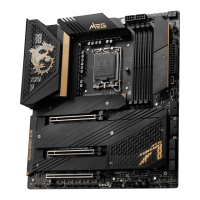
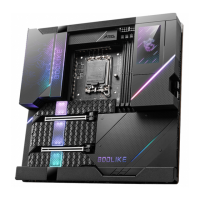
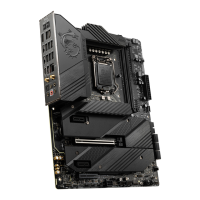

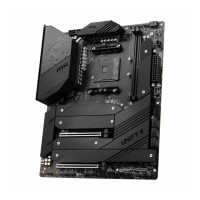
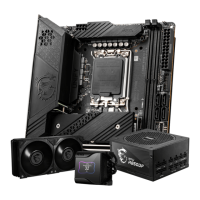

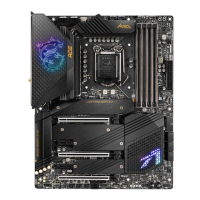
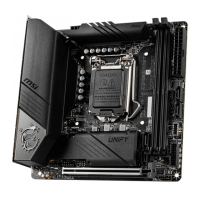
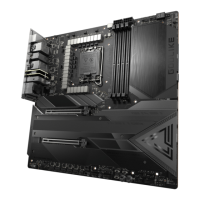
